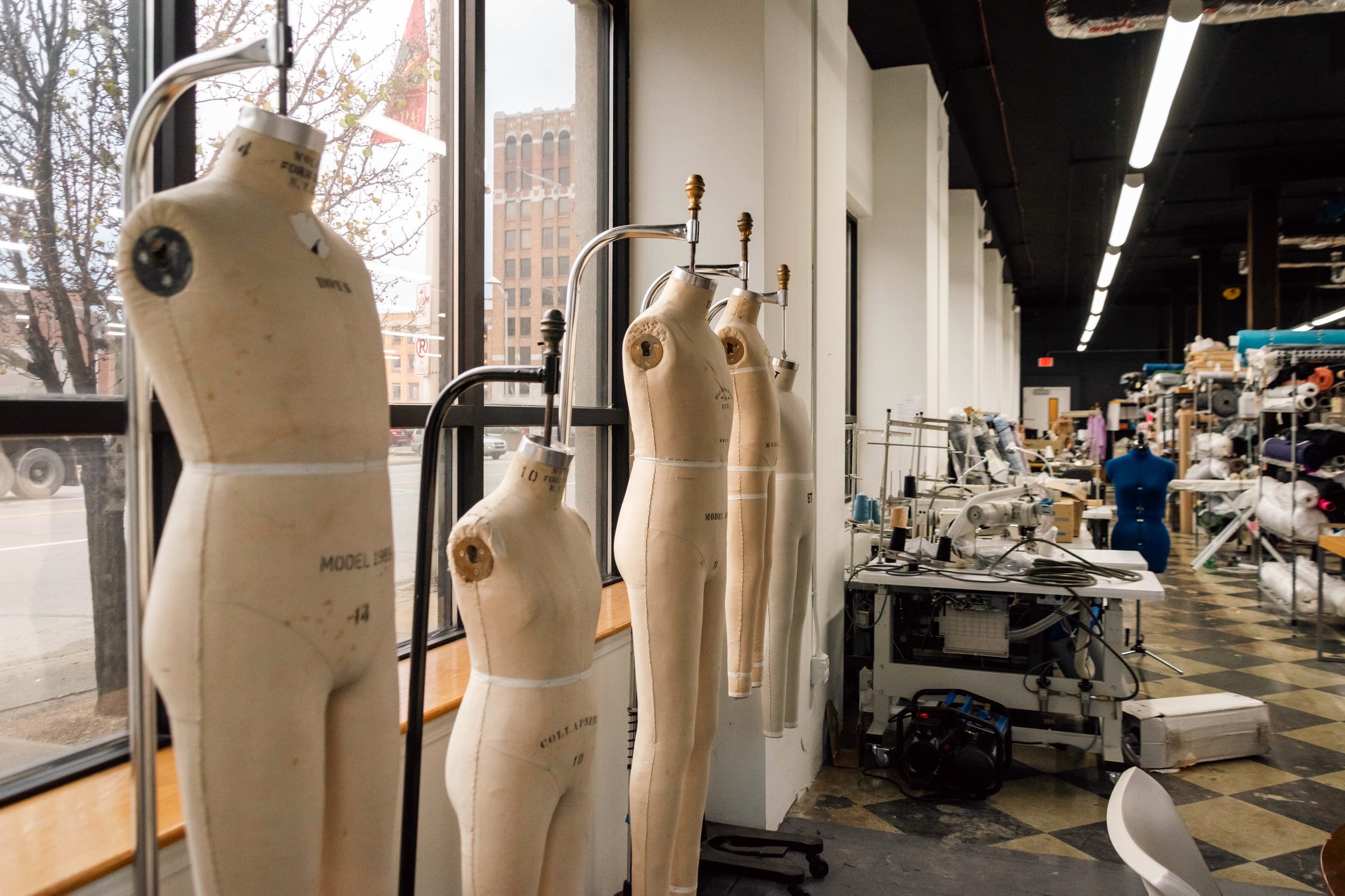In anticipation of Halloween, which is only a few days away, I went on an autumn adventure this weekend to Three Cedars Farm in Northville, Michigan, with Metro Detroit model “Lana Lenore” (who also happens to be a very talented graphic designer, in case you know of any magazines or local businesses that might be looking for one). I brought my camera along and while we toured the historic farm, visited the farm animals, browsed the old-fashioned general store and devoured fresh cider and donuts on an adorable stone patio, we stopped to take these fun 1950s-themed photos celebrating the charm of a simpler era.
portraiture
From the Archives: Documenting Detroit's Fashion Industry
I’ve been sifting through my old editorial archives recently in an attempt to get organized, update my portfolio and social media, and find a better way to cohesively showcase my photography and journalism work together, since both modes of expression are often intertwined with each other in my work. It’s been especially great to revisit old photos I took as part of my reporting process while on assignment in Detroit — particularly the images I made while writing a series of features about the city’s emerging fashion and apparel industry for Model D Media in 2020.
From photographing and interviewing acclaimed fashion designer Tracy Reese (pictured above) in her Detroit studio as she worked to launch a new collection for her Detroit-based label Hope for Flowers for a feature in Model D in the summer of 2020, to photographing and interviewing fashion entrepreneur Roslyn Karamoko (pictured below) in her retail store, Detroit is the New Black, on Woodward Ave. (the shop has since closed) for the same publication that year, it’s been an honor to document the emerging fashion industry here in Detroit both as a journalist and photographer.
In Metro Detroit, where poverty, layoffs and dwindling career opportunities have worried residents for years, emerging industries like the fashion and apparel sector are important. They offer evidence that the region is rising from the ashes of its tumultuous past — and the comeback has been inspiring to document, both visually and in words.
Beyond the fashion design and retail space, the city’s emerging apparel manufacturing industry has also been fascinating to document over the last four years as pioneering entrepreneurs and nonprofits have found innovative ways to merge fashion with Detroit’s renowned manufacturing legacy.
Photographing and interviewing local industry leaders like Jen Guarino of the Industrial Sewing and Innovation Center (pictured above) for a feature for Model D as well as Karen Buscemi of Detroit Sewn (pictured below; the company announced its recent closure in February) for other fashion-related stories I wrote for the publication in 2020 allowed me to watch a new history of fashion unfold in Detroit.
What has been most inspiring, though, has been watching some of the city’s most successful fashion entrepreneurs use their position to lift up those around them through the creation of internship opportunities and apparel manufacturing training programs, like the one I photographed and interviewed Cassidy and Kelsey Tucker of Deviate (pictured below) about for a feature in Model D in 2020.
It’s a rewarding feeling to stand behind the lens and sense that you’re documenting history. Watching — and recording — the slow emergence of Detroit’s apparel industry has been a fascinating adventure, and I’m looking forward to seeing more of what the city has to offer the fashion world.
A Second Look at Overlooked Locations
I recently had the opportunity to work with Shannon Lorraine, a model based in Metro Detroit, on a portfolio development shoot. Makeup was provided by the very talented Noelle from Viva La Glam.
For the shoot, we opted for a classic editorial aesthetic (think print magazines circa the 1990s), with a strong storytelling element that highlighted a leisurely summer day in the city. Rather than Detroit, though, I chose to shoot in downtown Monroe, Michigan — a location rich in historical architecture, details and texture, but often overlooked in favor of more modern, trendy spots around Southeast Michigan.
Still, I’m convinced the decision was the right one. Location plays an integral role in visual storytelling and, in a world where architecture and interior design are increasingly homogenized to conform with social media trends, shooting in unusual and overlooked locations can make a significant difference in adding to the emotion, drama and visual interest of a photograph.
For this shoot, each location we stopped at had rich, historic details and a classic aesthetic that recalled a time before social media altered our cities, interiors and environments. The details of a simpler bygone era created an almost timeless and cinematic quality when photographed, adding to each image’s ability to convey a story — and a little bit of mystery.
































